#San Diego Conquistadors
Explore tagged Tumblr posts
Text

LEYENDA DEL SUMIDERO
Se dice que los chiapanecas eran particularmente agresivos y que su poderío militar era tal que se duda que alguna vez fueran conquistados por los aztecas.
La leyenda nos dice que los chiapanecas lucharon valientemente contra los conquistadores españoles. Se cuenta que esta notable población se acabó, no porque los conquistadores la hubiesen sometido, sino por la decisión propia de quitarse la vida antes que aceptar la dominación.
Inútilmente, Luis Marín sometió Nandalumí (Pueblo grande) en 1524, pues pronto sus pobladores volvieron a sus viejas costumbres. En 1528, sabedores de la fiereza de los indios chiapanecas, los españoles, al mando de Diego de Mazariegos, iban muy bien armados y con el apoyo de los pueblos vecinos, llegaron hasta el Peñón de Tepechtía, en el Cañón del Sumidero, donde, se dice, se libró la última batalla contra los valientes nativos.
Después de una feroz batalla pronto se impusieron los españoles. Al verse cercados por el enemigo y ante el peligro de ser derrotados, los sitiados en vez de rendirse se arrojaron al precipicio desde la peña que dominaba el río con su altura casi vertical. Familias enteras de chiapanecas se arrojaron al precipicio muriendo en este suicidio colectivo, según la fuente colonial más de 15.000, lo que provocó que las aguas del río se tiñeran de rojo.
Conmovido ante el hecho, el capitán español cesó el combate. Con los sobrevivientes surgieron las primeras encomiendas y en las orillas del río fue fundado un nuevo pueblo: Villarreal de los indios, la Chiapa de los indios: Chiapa de Corzo, que con la Chiapa de los españoles: San Cristóbal de las Casas, dieron nombre al estado.
La batalla en el Sumidero fue eternizada en el blasón de armas que el Emperador Carlos V concedió en 1535 a la ciudad de San Cristóbal de los Llanos de Chiapa.
Realidad o ficción, para los chiapanecos, la leyenda del Sumidero es un símbolo de la lucha por la ansiada libertad.
Imagen realizada por : WowChiapas
4 notes
·
View notes
Text




IMAGENES Y DATOS INTERESANTES DEL 9 DE OCTUBRE DE 2024
Día de la Comunidad Valenciana, Día Mundial del Correo, Día Europeo del Arte Rupestre, Semana Mundial del Espacio, Año Internacional de los Camélidos.
Santa Sara, San Dionisio, San Domnino y San Aniceto.
Tal día como hoy en el año 2004
En Afganistán se celebran las primeras elecciones presidenciales tras la caída del régimen talibán con una altísima participación y sin grandes problemas logísticos o de seguridad. Confirmando los pronósticos, Hamid Karzai, que es presidente interino de la administración afgana de transición desde diciembre de 2001, se proclama vencedor con más del 55 % de los votos. Entre fuertes medidas de seguridad, tomará posesión del cargo el próximo 7 de diciembre en la capital, Kabul, en un acto que contará con la asistencia de 150 mandatarios internacionales anunciando, unos días más tarde, la formación de un nuevo Gobierno. (Hace 20 años)
1941
En EE.UU., el presidente Franklin D. Roosevelt autoriza el desarrollo y construcción de una bomba atómica, para lo que incrementa considerablemente el presupuesto militar con dinero de las arcas públicas que incluso serán desconocidas por el Congreso hasta 1944. (Hace 83 años)
1910
En Portugal la revolución depone la monarquía e instaura la República que será incapaz de solventar los problemas de este país inmerso en la conflictividad social, la corrupción y los enfrentamientos con la Iglesia, por lo que en 1926 dará paso a una dictadura que durará más de 45 años, hasta ser derrocada en 1974 de forma incruenta durante la "Revolución de los claveles". (Hace 114 años)
1874
En la ciudad suiza de Berna, con el fin de regularizar el correo a escala mundial, se funda la Unión Postal General que se transformará en la Unión Postal Universal en 1878. Hoy es un organismo especializado de las Naciones Unidas cuyo objetivo es afianzar la organización y mejorar los servicios postales en sus más de 190 países miembros. (Hace 150 años)
1820
En Guayaquil, actual Ecuador, se inicia su proceso independentista para romper los lazos coloniales con el Imperio español, al subscribir el Acta de Independencia de su país. (Hace 204 años)
1651
En Londres (Inglaterra), Oliver Cromwell promulga el Acta de Navegación, ley proteccionista que determina que las mercancías procedentes de Asia, África y América sólo pueden llegar a Inglaterra en barcos ingleses y, sólo los buques ingleses están autorizados a exportar a los territorios de ultramar. Esta medida conducirá a las guerras navales anglo-holandesas que se desarrollarán de 1652 a 1674. (Hace 373 años)
1582
Se puede decir que este día de este año nunca existió ya que en Roma, el papa Gregorio XIII ha decretado el calendario gregoriano en sustitución del calendario juliano, y la noche del pasado jueves 4 de octubre dará paso al viernes 15 de octubre, por lo cual el 9 de octubre de 1582 nunca existió en nuestro calendario. (Hace 442 años)
1558
En la cordillera de los Andes venezolanos, el conquistador español Diego García de Paredes funda la ciudad de Trujillo, actual capital del estado homónimo. (Hace 466 años)
1558
En la cordillera de los Andes venezolanos, ubicada en una inmensa meseta a 1.600 metros de altura sobre el nivel del mar, el capitán español Juan Rodríguez Suárez funda la "Ciudad de Santiago de Los Caballeros de Mérida", actual capital del Estado de Mérida. (Hace 466 años)
1410
En la pared sur del Ayuntamiento de Praga, actual República Checa, tiene lugar la inauguración del reloj astronómico que, con el tiempo se convertirá en símbolo de la capital checa. Cuenta con un cuadrante astronómico, que indica las 24 horas del día mientras representa las posiciones del sol y de la luna en el cielo. Tiene figuras animadas que salen de su refugio para dar las horas y también muestra los meses del año en otro mecanismo circular. Un prodigio de la mecánica medieval. (Hace 614 años)
1238
En la actual España y tras haber iniciado en 1233 la conquista del territorio valenciano, que cuenta ya con tres siglos de dominio sarraceno marcados por los reinos taifas de Balansiya, Alpuente, Denia, y Murcia, el rey Jaime I el Conquistador hace en este día su entrada triunfal en la ciudad mediterránea de Valencia, después de haber pactado con el rey moro de Valencia Abul Djumayl Zayyan, el 28 de septiembre anterior, la capitulación de la ciudad. (Hace 786 años)
768
En Francia, tras celebrarse el funeral del rey Pipino, sus dos hijos son investidos reyes por los nobles y ungidos por los obispos. La coronación de Carlomagno tiene lugar en Noyon, mientras que la de Carlomán es en Soissons. En 771 Carlomán, morirá repentinamente y Carlomagno se apoderará de sus territorios; aunque los herederos de Carlomán buscarán refugio en la corte de Desiderio. (Hace 1256 años)
2 notes
·
View notes
Text
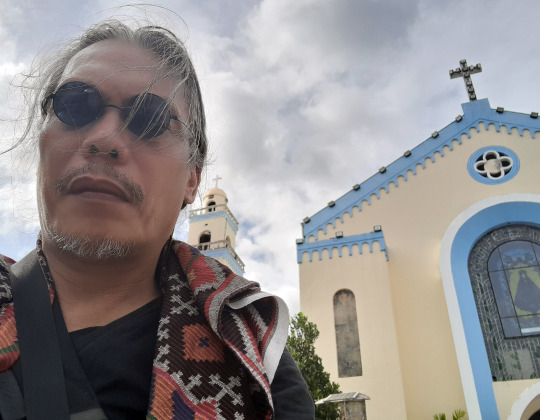
Guadalupe church selfie
Standing outside the 1933-1977 Santuario Arquidiocesano de Nuestra Señora de Guadalupe de Cebú in the Guadalupe District of Cebú City.
The history of the Nuestra Señora de Guadalupe de Cebú started with the five Spanish Augustinian missionaries of Andrés de Urdaneta (1508-1568), Martín de Rada (1533-1578), Diego de Herrera (1525-1576), Andrés de Aguirre, and Pedro de Gamboa who accompanied the Spanish conquistador Miguel López de Legazpi (1502-1572) to the Philippines in 1565 started their evangelizations to the natives in Cebú. They were able to enter the mountainous region of Tagoan (now the Guadalupe District) to convert the local chieftain Makiyung and his wife Kamahukom, to accept the Christian names of Romualdo (Maldo) and Clēofe (Pe).
The Tagoan area was a newly established settlement, by the people who had fled from the Sawang village after Miguel López de Legazpi razed the area when Rajah Tupas (1497-1568) challenged his authority. The area was named Tagoan (hiding place) due to the many caves the villagers fled to for safety.
With the arrival of the second batch of Augustinian missionaries in 1575, the priests brought with them a statue of the Nuestra Señora de Guadalupe of Mēxico, which is based on the 1531 apparitions of the Blessed Virgin Mary to San Juan Diego Cuauhtlatoatzin (1474-1548).
In 1751 a small wooden chapel dedicated to Nuestra Señora de Guadalupe was erected in the area, with the Parròquia de San Nicolás de Tolentino (Parish of St. Nicolas of Tolentino, est. 1584) as its mother parish 4.5 kilometers away. Devotion to the Nuestra Señora de Guadalupe grew as the locals had noted peculiar events around the bamboo kamálig (barnhouse) where the image was housed.
There are no historical records of what happened to the image of the Señora de Guadalupe until 1880, when a “mangangayam” wild fowl trapper named Ricardo Ramírez noticed flashing lights from a cave in Barrio Banawan (now the Guadalupe district). When investigating the source of the lights, Ramírez discovered the statue of the Blessed Virgin Mary atop a naturally formed rock altar inside the cave.
Ramírez took the statue to the local teniente del barrio, Eustaquio Abapo, and the local "mananabtan" (prayer group leader), Plácido Datan, who both could not surmise anything about the icon. So when the two village leaders took the statue to the Parròquia de San Nicolás, the parish priest confirmed that it was indeed the image of Nuestra Señora de Guadalupe.
The priest kept the image in the San Nicolás Church, and instructed the village leaders to construct a small chapel in their village, and that they could borrow it during the yearly novena of December 12. So from 1889-1920, the Señora de Guadalupe would be returned to the cave chapel on the night before the 12th of December and returned to the San Nicolás Church on the Sunday after the 12th. From being just a barrio devotion, belief in the Señora de Guadalupe grew throughout Cebú, when she was accredited for halting the expansion of the 1902 cholera epidemic in Cebú.
During a December 12 procession in 1920, the image of the Señora de Guadalupe fell off the carriage and landed upright, facing the general direction of Barrio Guadalupe. This led the people to believe that the image should be permanently enshrined in its mountain home, leading to the construction of the Iglesia de Nuestra Señora de Guadalupe de Cebú in 1933. However the new church was built 1.4 kilometers away from the Guadalupe Lángub Shrine Cave, as the cave was too small and deep into the winding mountain path for the general population to visit.
However, the new church as severely damaged by the 1945 bombings of World War II, and there were several reconstruction projects, with the current church completed in 1978.
Now the image is housed in the Santuario Arquidiocesano de Nuestra Señora de Guadalupe de Cebú, while a replica is on display at the Guadalupe Lángub Shrine exterior chapel and another one in the actual cave itself.
This picture was taken circa 2025, during my regular explorations of local historical landmarks around Cebú to get to know my new hometown.
#travel#history#churchhistory#filipinotraveler#philippines#cebuprovince#cebucity#historicalchurch#guadalupecebu#guadalupechurchebu
0 notes
Text
Events 4.22
1500 – Portuguese navigator Pedro Álvares Cabral lands in Brazil (discovery of Brazil). 1519 – Spanish conquistador Hernán Cortés establishes a settlement at Veracruz, Mexico. 1529 – Treaty of Zaragoza divides the eastern hemisphere between Spain and Portugal along a line 297.5 leagues (1,250 kilometres (780 mi)) east of the Moluccas. 1809 – The second day of the Battle of Eckmühl: The Austrian army is defeated by the First French Empire army led by Napoleon and driven over the Danube in Regensburg. 1836 – Texas Revolution: A day after the Battle of San Jacinto, forces under Texas General Sam Houston identify Mexican General Antonio López de Santa Anna among the captives of the battle when some of his fellow soldiers mistakenly give away his identity. 1864 – The U.S. Congress passes the Coinage Act of 1864 that permitted the inscription In God We Trust be placed on all coins minted as United States currency. 1876 – The first National League baseball game is played at the Jefferson Street Grounds in Philadelphia. 1889 – At noon, thousands rush to claim land in the Land Rush of 1889. Within hours the cities of Oklahoma City and Guthrie are formed with populations of at least 10,000. 1898 – Spanish–American War: President William McKinley calls for 125,000 volunteers to join the National Guard and fight in Cuba, while Congress more than doubles regular Army forces to 65,000. 1906 – The 1906 Intercalated Games open in Athens. 1915 – World War I: The use of poison gas in World War I escalates when chlorine gas is released as a chemical weapon in the Second Battle of Ypres. 1930 – The United Kingdom, Japan and the United States sign the London Naval Treaty regulating submarine warfare and limiting shipbuilding. 1944 – The 1st Air Commando Group using Sikorsky R-4 helicopters stage the first use of helicopters in combat with combat search and rescue operations in the China Burma India Theater. 1944 – World War II: Operation Persecution is initiated: Allied forces land in the Hollandia (currently known as Jayapura) area of New Guinea. 1944 – World War II: In Greenland, the Allied Sledge Patrol attack the German Bassgeiger weather station. 1945 – World War II: Prisoners at the Jasenovac concentration camp revolt. Five hundred twenty are killed and around eighty escape. 1945 – World War II: Sachsenhausen concentration camp is liberated by soldiers of the Red Army and Polish First Army. 1948 – Arab–Israeli War: The port city of Haifa is captured by Jewish forces. 1951 – Korean War: The Chinese People's Volunteer Army begin assaulting positions defended by the Royal Australian Regiment and the Princess Patricia's Canadian Light Infantry at the Battle of Kapyong. 1954 – Red Scare: Witnesses begin testifying and live television coverage of the Army–McCarthy hearings begins. 1966 – American Flyers Airline Flight 280/D crashes on approach to Ardmore Municipal Airport in Ardmore, Oklahoma, killing 83. 1969 – British yachtsman Sir Robin Knox-Johnston wins the Sunday Times Golden Globe Race and completes the first solo non-stop circumnavigation of the world. 1969 – The formation of the Communist Party of India (Marxist–Leninist) is announced at a mass rally in Calcutta. 1970 – The first Earth Day is celebrated. 1970 – Chicano residents in San Diego, California occupy a site under the Coronado Bridge, leading to the creation of Chicano Park. 1974 – Pan Am Flight 812 crashes on approach to Ngurah Rai International Airport in Denpasar, Bali, Indonesia, killing all 107 people on board. 1977 – Optical fiber is first used to carry live telephone traffic. 1992 – A series of gas explosions rip through the streets in Guadalajara, Mexico, killing 206. 1993 – Eighteen-year-old Stephen Lawrence is murdered in a racially motivated attack while waiting for a bus in Well Hall, Eltham. 2005 – Japan's Prime Minister Junichiro Koizumi apologizes for Japan's war record. 2016 – The Paris Agreement is signed, an agreement to help fight global warming.
0 notes
Video
youtube
MLDC PACIFIC PACIFIC ALBUQUERQUE COYOTES ANAHEIM DRAGONFLIES CALGARY COWBOYS DENVER RIDERS EDMONTON OUTLAWS FRESNO BLUES HONOLULU HAWAIIANS LAS VEGAS LIZARDS LOS ANGELES STARS OAKLAND OILERS PHOENIX FIREBIRDS PORTLAND PIONEERS SACRAMENTO HAWKS SAN DIEGO SHARKS SAN FRANCISCO SEALS SAN JOSE CONQUISTADORS SEATTLE THUNDERSONICS TUCSON SIDEWINDERS UTAH STAGS VANCOUVER CRUSADERS
0 notes
Text
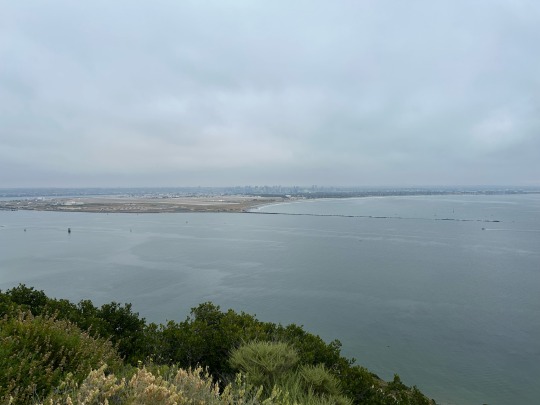
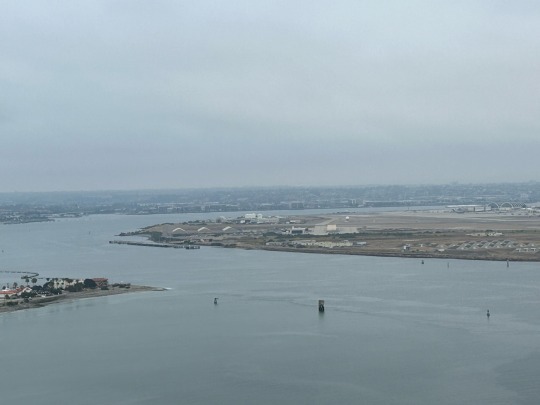
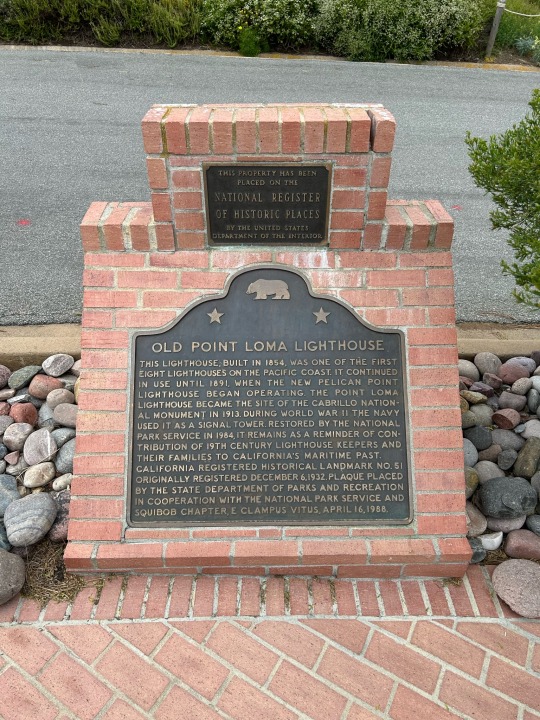
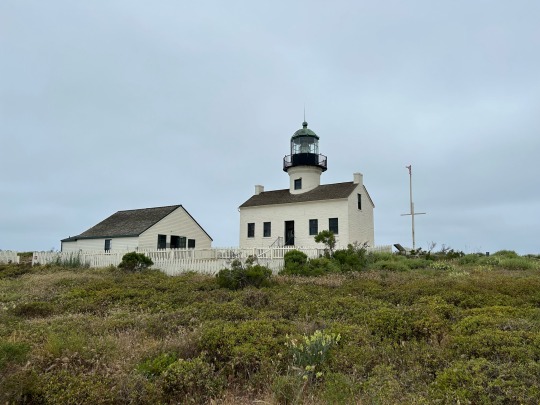
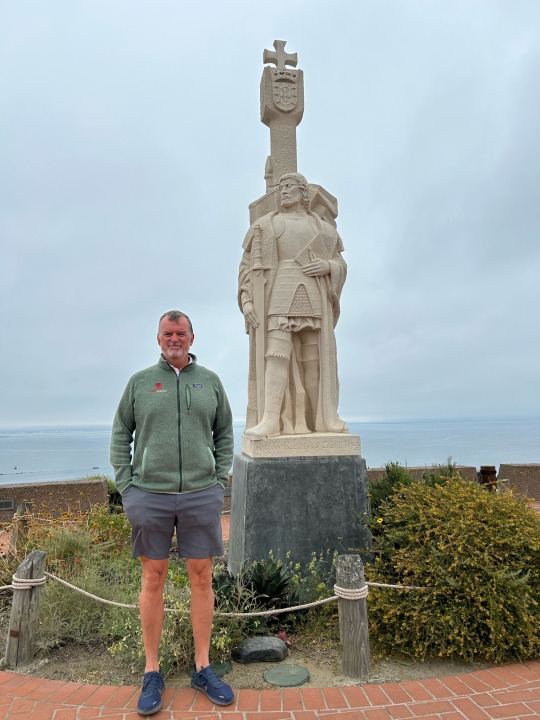
Point Loma lighthouse and Cabrillo National Monument. Great views of the harbor and city from up here on a headland at the entrance to the bay.
Juan Rodriguez Cabrillo was the Spanish conquistador who first discovered San Diego bay in 1543 aboard the galleon San Salvador
0 notes
Text
Timothy Winegard, profesor de Historia en la Universidad Colorado Mesa América Latina vive la peor epidemia de dengue de las últimas décadas. Según este historiador canadiense, se trata de un episodio más de la ancestral guerra contra nuestros enemigos más mortíferos: los mosquitos, pequeñas criaturas que han dirigido el curso de la historia humana con las enfermedades que transmiten Los mosquitos son el depredador más letal de la humanidad, según el historiador Timothy Winegard. / UC San Diego/T. Winegard Por Federico Kukso Su inconfundible figura destaca entre los jeroglíficos del muro de piedra del Templo de Ramsés III en Luxor, Egipto. También resalta en coloridas cerámicas mayas, rollos japoneses, grabados holandeses, folletos políticos chinos, publicidades y películas informativas estadounidenses y esculturas veneradas como dioses en la India. El mosquito ha acompañado la historia humana, reconfigurándola una y otra vez, mucho más que cualquier otro animal en el planeta. Según las estadísticas, “ha provocado la muerte de cerca de la mitad de todos los seres humanos que han vivido”, cuenta el canadiense Timothy C. Winegard, profesor de Historia en la Universidad Colorado Mesa (EE UU), en su libro El mosquito: La historia de la lucha de la humanidad contra su depredador más letal. A través de las enfermedades que transmite, este pequeño insecto volador ha decidido el resultado de innumerables guerras, ha propiciado el ascenso y caída de antiguos imperios, ha paralizado y arrasado economías. Y pese a todos los avances científicos, aun siembra preocupación, provoca sufrimiento Es precisamente lo que sucede en la actualidad en América Latina, región que está experimentando la peor epidemia de dengue en las últimas décadas. Según la Organización Panamericana de la Salud, en las 12 primeras semanas de 2024, se reportaron 3.578.414 casos -un aumento del 254% en comparación con el mismo período en 2023- y 1039 muertes. Algunos gobiernos combaten con decisión esta enfermedad tropical transmitida por el mosquito Aedes aegypti. México, por ejemplo, apuesta por el desarrollo de fármacos antivirales, y Brasil se convirtió en el primer país del mundo en vacunar a la población para prevenir esta infección que provoca fiebre, dolores musculares y en ciertos casos hemorragias y muerte. “El mosquito es nuestro máximo depredador”, subraya el historiador canadiense, “y a medida que aumentan las temperaturas, expande su alcance y se esparce por el planeta, transportando enfermedades que alguna vez estuvieron confinadas a los trópicos”. Los mosquitos son irritantes y en algunos casos letales. Están en el planeta desde mucho antes que apareciéramos los seres humanos, ¿verdad? Así es. La evidencia sugiere que los mosquitos, tal como los conocemos, surgieron hace 190 millones de años. Tuvieron como presas a los dinosaurios. En la actualidad, hay 3700 especies en el planeta. Y muy pocas, alrededor de cien, transmiten patógenos. Los mosquitos que pican son siempre las hembras. Están biológicamente programadas para ello: necesitan nuestra sangre para reproducirse, para hacer que sus larvas crezcan y maduren. Solo intentan ser buenas madres. Los mosquitos surgieron hace 190 millones de años. / Dany Azar En su libro, afirma que estos pequeños zumbadores que no pesan más que 2,5 miligramos han sido el azote de la humanidad a lo largo de nuestra existencia. Y, sin embargo, pocos historiadores han advertido su protagonismo en la historia humana. ¿Por qué? Mucho tiene que ver con nuestra arrogancia como especie. Nos gusta pensar que el rumbo de la historia es decidido por grandes hombres y mujeres. Alabamos a grandes conquistadores y héroes nacionales, cuando en realidad gran parte del tiempo hay factores externos que inciden en los acontecimientos históricos y que los seres humanos no podemos controlar. Por ejemplo, el cambio climático tiene un rol importante si uno ve la historia en retrospectiva Me sorprendió descubrir el poder q...

View On WordPress
0 notes
Text
Rare 400-Year-Old Chocolate Book Heads To Auction In Portugal
Deemed the Oldest Book Dedicated Entirely to Chocolate, "Un Discurso del Chocolate" is Going Under the Hammer in Portugal at a Starting Price of €2000.
— By Theo Farrant | April 04, 2024
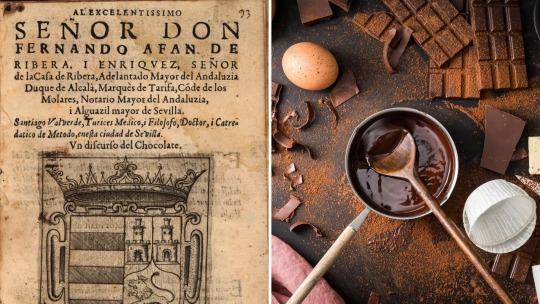
A rare 400-year-old book titled "Un Discurso del Chocolate", regarded as the oldest known book solely dedicated to chocolate, is hitting the auction block in Portugal.
This prized artefact, printed in Seville in 1624, is one of just three surviving copies of this work, written by Santiago de Valverde Turices, a Spanish doctor and academic.
Until now, only two other copies of the work were known to exist, one housed in the national library in Madrid and the other at the University of San Diego in California, according to Francisco Brito, a consultant at the Anno auction house, as reported by Portugal’s Publico newspaper.
"Un Discurso del Chocolate" contains a fusion of scientific inquiry, practical advice, recipes and cultural commentary. Divided into five parts, the book offers insights into the multifaceted nature of chocolate and its effects on the human body.
Notably, Turices cautions against the potential of chocolate to incite choleric tendencies in its consumers. Drawing from the medieval and early modern concept of bodily humors, he warns of chocolate's "hot, humid, and greasy" nature, which he believes can lead to irritability and anger.
Choco-Lore: A Bitter-Sweet History of The Confectionary
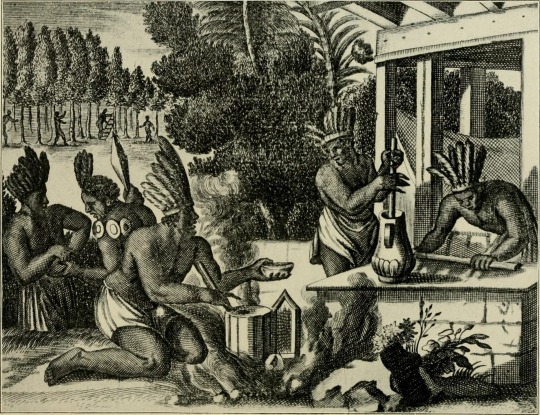
Native Americans roasting and grinding the beans, and mixing the chocolate in a jug with a whisk. Credit: Wikimedia Commons
The domestication of cocoa beans traces back at least 5,300 years to the region now known as southeast Ecuador's Zamora-Chinchipe Province, where the Mayo-Chinchipe culture first cultivated them. The practice was then introduced to Mesoamerica.
The indigenous peoples of Central America, particularly the Olmecs, Maya, and Aztecs, considered the cacao tree to be sacred, and its beans were used to create a bitter, frothy beverage called "xocolātl", which means "bitter water" in Nahuatl.
Legend has it that when Spanish explorers, led by conquistador Hernán Cortés, arrived in the Americas in the early 16th century in search of gold and riches, they discovered the smooth beverage.
Following the Spanish conquest of the Aztec Empire, xocolātl found its way to Europe. The Spanish soon adapted the indigenous recipe by adding sugar or honey to sweeten the bitter drink, as well as other spices like cinnamon and vanilla.
At first, it was consumed primarily as a drink, but eventually, chocolate houses began to emerge across Europe, particularly in Spain, Italy, and France in the 17th century.

A page from "Un discurso del chocolate" by Santiago de Valverde Turices. Credit: University of California
The recipes contained within Turices book, sourced from experts both in Spain and the "new world," provide a glimpse into the historical preparation and consumption of chocolate.
Turices advocates for the inclusion of annatto seeds, known as achiote, to enhance the taste, colour, and flavour of chocolate, particularly for people with choleric and sanguine temperaments.
The book, priced at €2,000, is among nine pieces being auctioned from the collection of José Augusto Correia de Campos, a Portuguese military officer, author, and archaeologist who passed away in 1977.
#Culture#Food 🍲 🍱 🥘 & Drink 🥤 🍹 🍺#Chocolate 🍫#Rare | 400-Year-Old | Chocolate 🍫 Book 📕#Auction#Portugal 🇵🇹#Un Discurso del Chocolate 🍫
0 notes
Text




IMAGENES Y DATOS INTERESANTES DEL 12 DE MARZO DE 2025
Día Mundial del Glaucoma, Día Mundial contra la Censura en Internet, Día Internacional de los Tuiteros, Semana Mundial del Dinero, Semana Mundial del Cerebro, Año Internacional de la Ciencia y la Tecnología Cuánticas.
Santa Fina y Santa Herlinda.
Tal día como hoy en el año 2003
Asesinan en Belgrado al primer ministro serbio Zoran Djindic.
1989
En el edificio del Laboratorio Europeo de Física de Partículas (CERN), cercano a Ginebra (Suiza), el investigador británico Tim Berners Lee describe en un informe para el CERN cual debe ser el protocolo para la transferencia de hipertextos. Este protocolo permite establecer un sistema de archivos de documentación mediante el uso de conexiones entre documentos de una forma simple. Hasta ahora, para añadir un enlace hay que modificar la ficha del documento referenciado; el nuevo sistema permitirá acceder a él simplemente indicando su "dirección" en la red. Éste el origen de lo que un año después se convertirá en la World Wide Web. (Hace 36 años)
1986
En España, el gobierno del PSOE, convoca un controvertido referéndum para decidir la permanencia en el seno de la OTAN, a la que pertenece desde 1982. El 52,5% de los votantes optará por dar el "sí" a la permanencia, el 39,8 % votará en contra. (Hace 39 años)
1947
En EE.UU el presidente de Harry S. Truman articula un discurso ante el Congreso en el que hace la siguiente afirmación: "Creo que la política de los EE.UU. debe de ser la de apoyar a los pueblos libres que están resistiendo intentos de agresión de minorías armadas o presión exterior". El objetivo final del discurso no es otro que conceder ayuda económica por importe de 400 millones de dólares a Grecia y Turquía, que se enfrentan a serias amenazas comunistas. Esta primera expresión importante de la política norteamericana de "contención" al comunismo durante la guerra fría, pasará a ser conocido como la "Doctrina Truman". (Hace 78 años)
1930
En La India, Mahatma Gandhi inicia una larga marcha hacia el mar en protesta por los impuestos británicos sobre la sal. Liderando a miles de manifestantes, Gandhi y sus seguidores llegarán al Mar Arábigo. Allí secarán su propia sal evaporando agua de mar. Gandhi y 60.000 seguidores serán detenidos, pero este hecho proporcionará respeto, apoyo y reconocimiento al Mahatma y a su movimiento pacífico de desobediencia civil, por parte de la comunidad internacional. (Hace 95 años)
1913
Se comienza a construir Canberra, capital de Australia, así llamada por la esposa del Gobernador general Lord Thomas Denman. En 1908 se eligió su capitalidad como un compromiso entre Sydney y Melbourne, las dos grandes ciudades que rivalizaban por dicho título. (Hace 112 años)
1849
En la India, el ejército Sij se rinde a los británicos al final de la Segunda Guerra sij, logrando así los ingleses anexionarse la región del Punjab, en el noroeste de la India, que permanecerá bajo su control hasta 1947, fecha en que los británicos impondrán la partición del país. (Hace 176 años)
1622
Es canonizada en Roma por el papa Gregorio XVI, Santa Teresa de Jesús, nacida en Ávila (España) en 1515, Doctora de la Iglesia y reformadora de la orden del Carmelo. (Hace 403 años)
1535
En el actual Ecuador, el capitán Francisco Pacheco, perteneciente al ejército del conquistador español Francisco de Orellana y bajo las órdenes de Diego de Almagro, funda, con el objetivo de custodiar la frontera norte, abastecer de maíz, agua y alimento a los barcos españoles, una ciudad con el nombre de Muy Leal y Noble Villa Nueva de San Gregorio de Portoviejo, convirtiéndose en la primera ciudad ecuatoriana más antigua asentada en territorio costero. (Hace 490 años)
0 notes
Text
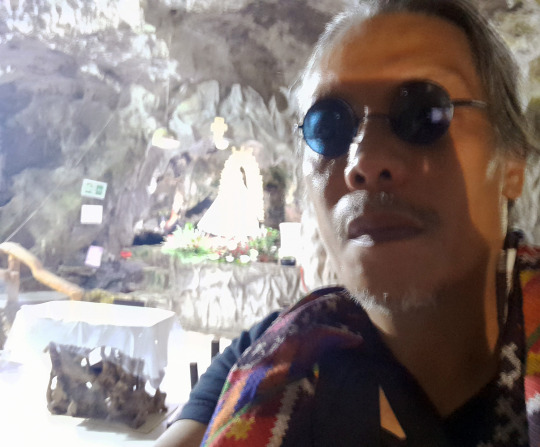
Holy cave selfie
Standing inside the cave chapel of the Guadalupe Lángub Shrine in Barangay Kalunasan of the Guadalupe District of Cebú City.
The history of the Guadalupe Lángub Shrine started with the five Spanish Augustinian missionaries of Andrés de Urdaneta (1508-1568), Martín de Rada (1533-1578), Diego de Herrera (1525-1576), Andrés de Aguirre, and Pedro de Gamboa who accompanied the Spanish conquistador Miguel López de Legazpi (1502-1572) to the Philippines in 1565 started their evangelizations to the natives in Cebú. They were able to enter the mountainous region of Tagoan (now the Guadalupe District) to convert the local chieftain Makiyung and his wife Kamahukom, to accept the Christian names of Romualdo (Maldo) and Clēofe (Pe).
The Tagoan area was a newly established settlement, as the people fled from the Sawang village after Miguel López de Legazpi razed the area after Rajah Tupas (1497-1568) challenged his authority. The area was named Tagoan (hiding place) due to the many caves the villagers fled to for safety.
With the arrival of the second batch of Augustinian missionaries in 1575, the priests brought with them a statue of the Nuestra Señora de Guadalupe of Mēxico, which is based on the 1531 apparitions of the Blessed Virgin Mary to San Juan Diego Cuauhtlatoatzin (1474-1548).
In 1751 a small wooden chapel dedicated to Nuestra Señora de Guadalupe was erected in the area, with the Parròquia de San Nicolás de Tolentino (Parish of St. Nicolas of Tolentino, est. 1584) as its mother parish 4.5 kilometers away. Devotion to the Nuestra Señora de Guadalupe grew as the locals had noted peculiar events around the bamboo kamálig (barnhouse) where the image was housed.
There are no historical records of what happened to the image of the Señora de Guadalupe until 1880, when a “mangangayam” wild fowl trapper named Ricardo Ramírez noticed flashing lights from a cave in Barrior Banawan (the then name of the Guadalupe district). When investigating the source of the lights, Ramírez discovered the statue of the Blessed Virgin Mary atop a naturally formed rock altar inside the cave.
Ramírez took the statue to the local teniente del barrio, Eustaquio Abapo, and the local "mananabtan" (prayer group leader), Plácido Datan, who both could not surmise anything about the icon. So when the two village leaders took the statue to the Parròquia de San Nicolás, the parish priest confirmed that it was indeed the image of Nuestra Señora de Guadalupe.
The priest kept the image in the San Nicolás Church, and instructed the village leaders to construct a small chapel in their village, and that they could borrow it during the yearly novena of December 12. So from 1889-1920, the Señora de Guadalupe would be returned to the cave chapel on the night before the 12th of December and returned to the San Nicolás Church on the Sunday after the 12th. From being just a barrio devotion, belief in the Señora de Guadalupe grew throughout Cebú, when she was accredited for halting the expansion of the 1902 cholera epidemic in Cebú.
During a December 12 procession in 1920, the image of the Señora de Guadalupe fell off the carriage and landed upright, facing the general direction of Barrio Guadalupe. This led the people to believe that the image should be permanently enshrined in its mountain home, leading to the construction of the Iglesia de Nuestra Señora de Guadalupe de Cebú. However the new church was 1.4 kilometers away from the cave, as the Guadalupe Lángub Shrine was too small and deep into the winding mountain path for the general population to visit.
Now the image is housed in the Santuario Arquidiocesano de Nuestra Señora de Guadalupe de Cebú, while a replica is on display at the Guadalupe Lángub Shrine exterior chapel and another one in the actual cave itself.
This picture was taken circa 2025, during my regular explorations of local historical landmarks around Cebú to get to know my new hometown.
#travel#history#churchhistory#filipinotraveler#philippines#cebuprovince#cebucity#historicalchurch#guadalupecebu#guadalupecavecebu#langubcavecebu#guadalupelangubcave
0 notes
Photo



San Diego Conquistadors 1971-1975
San Diego Sails 1975-1976
24 notes
·
View notes
Text
THE 10 MLDC WORST PEOPLES
SPONSOR-Roman | Digital Health Clinic for Men by Ro
ATLANTIC BALTIMORE BOMBERS-OWNER BOSTON SILVERRIDERS-PLAYER BUFFALO RHINOS-PLAYER HALIFAX ADMIRALS-OWNER HAMILTON HUSKIES-OWNER HARTFORD BAY PRIVATEERS-HEAD COACH LONG ISLAND GENERALS-OWNER MONTREAL ROYALS-PLAYER 1994-2018 NEW JERSEY DRAGONS-OWNER NEW YORK KNIGHTS-PLAYER NORFOLK DESTROYERS-PLAYER OTTAWA CAPITALS-OWNER 1959-2022 PHILADELPHIA TIGERS-OWNER PITTSBURGH MINERS-GM PROVIDENCE FLYING SHEARMEN-PLAYER QUEBEC CITY VIPERS-PLAYER ROCHESTER DYNAMOS-PLAYER SYRACUSE LOONS-PLAYER TORONTO TOROS-PLAYER 2019-PRESENT WASHINGTON AMERICANS-GM MIDWEST CHICAGO BARBARIANS-PLAYER CINCINNATI KINGS-PLAYER 2016-PRESENT CLEVELAND BULLDOGS-PLAYER 2023-PRESENT COLUMBUS FEDERALS-OWNER 1923-2008 DETROIT WOLVERINES-PLAYER INDIANAPOLIS RACERS-OWNER IOWA DUSTERS-OWNER KANSAS CITY MUSTANGS-PLAYER LOUISVILLE MONARCHS-PLAYER MILWAUKEE WARRIORS-OWNER 1948-2001 MINNESOTA GRIZZLIES-GM OMAHA CYCLONES-GM REGINA RAIDERS-GM SASKATOON ARROWS-PLAYER ST.LOUIS STALLIONS-GM TOLEDO TRIBE-PLAYER WICHITA CROWS-HEAD COACH WINNIPEG WOLVES-PLAYER PACIFIC ALBUQUERQUE COYOTES-PLAYER ANAHEIM DRAGONFLIES-PLAYER CALGARY COWBOYS-OWNER DENVER RIDERS-GM EDMONTON OUTLAWS-HEAD COACH FRESNO BLUE HERONS-OWNER LAS VEGAS LIZARDS-PLAYER LOS ANGELES STARS-OWNER OAKLAND OILERS-OWNER PHOENIX FIREBIRDS-PLAYER PORTLAND PIONEERS-OWNER SACRAMENTO HAWKS-OWNER SAN DIEGO SHARKS-OWNER SAN FRANCISCO SEALS-PLAYER SAN JOSE CONQUISTADORS-PLAYER SEATTLE THUNDERSONICS-PLAYER UTAH STAGS-PLAYER VANCOUVER CRUSADERS-PLAYER SOUTHERN ATLANTA BLAZERS-GM/OWNER AUSTIN MARINERS-OWNER BIRMINGHAM BLACKSMITHS-OWNER CHARLOTTE BREAKERS-OWNER DALLAS MARSHALS-PLAYER EL PASO STAMPEDERS-PLAYER HOUSTON BULLS-GM JACKSONVILLE GATORS-GM MEMPHIS BLUES-OWNER 1938-2024 MIAMI MARAUDERS-PLAYER MOBILE CRIMSON LIONS-PLAYER NASHVILLE BISONS-PLAYER NEW ORLEANS PIRATES-PLAYER OKLAHOMA CITY SEMINOLES-PLAYER 2008-PRESENT ORLANDO SUNS-PLAYER 2017-PRESENT RALEIGH-DURHAM FLYERS-PLAYER SAN ANTONIO PHANTOMS-GM TAMPA BAY BARRACUDAS-PLAYER
0 notes
Text
QUE CAIGAN LOS COLONIZADORES DEL PASADO, Y TAMBIÉN LOS DEL PRESENTE, CONVERTIDOS HOY EN PARTIDOS POLÍTICOS, MALOS GOBIERNOS Y EMPRESAS EXTRACTIVISTAS
Hace 30 años, el 12 octubre de 1992, indígenas chiapanecos que dos años después se darían a conocer como zapatistas, derribaron la estatua del sanguinario conquistador Diego de Mazariegos, en San Cristóbal de las Casas, Chiapas, durante la marcha de los 500 años del mal llamado “descubrimiento” de América.
Foto: Antonio Turok.

#NuestraLuchaEsPorLaVida#EZLN#12deOctubre#NoNosConquistaron#no nos conquistaron#Livertad a los presos políticos#contra la guerra capitalista#capitalismo
13 notes
·
View notes
Text
¿FUÉ EL (REY) MENCEY BELICAR DE ICODEN EL QUE FUÉ LLEVADO A VENECIA?
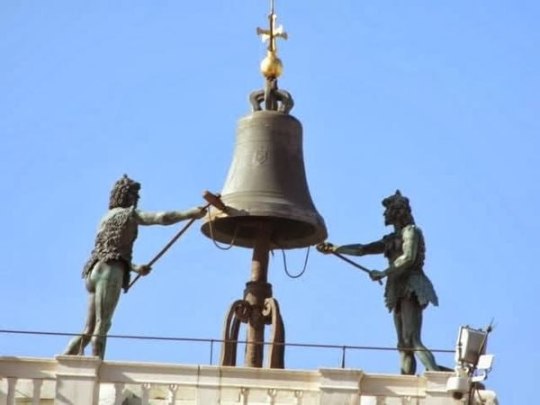
Pablo Deluca
¿FUE EL MENCEY BELICAR DE ICODEN EL QUE FUE LLEVADO A VENECIA? (*)
(fotos: dcha: dos naturales del Barranco Ruiz (antiguo menceyato de Icoden); izda: Torre dei Mori, Dell´Orologio o Reloj, en plaza San Marcos de Venecia).
Mucho se ha polemizado en torno al hecho histórico de la entrega de uno de los siete menceyes guanches presentes en la Corte de Almazán y que fue llevado a la República de Venecia como obsequio de los Reyes Católicos (RR.CC) a finales del s.XV, recién terminada la conquista de Tenerife. En este artículo intentamos probar, a modo de hipótesis, de que pudo haber sido el mencey Belicar el protagonista de este episodio.
De los nueve menceyes que gobernaban la isla en la etapa final hay que descartar dos:
1) El gran mencey de Taoro, Imoha Benchomo, herido mortalmente en San Roque, La Laguna, en noviembre de 1495 y a sus descendientes Benytomo, que tomó el nombre de Cristóbal Hernández de Taoro, muriendo al poco tiempo (B. Alfonso I, 1991:343) (otro Cristóbal Hernández de Taoro que testó en La Orotava en 1553 o 1556, según De Arribas, era su hijo Deriman, más conocido por Cristóbal Bencomo) y Bentor, desriscado por Tigaiga en la primavera de 1496.
2) El mencey Tegueste II, (Juan de Tegueste), bien datado, que murió a poco de la conquista dejando como tutor de su hijo Juan Teguazo al intérprete y conquistador majorero Guillén Castellano. También se habla de otro hijo, Tegues, conocido más tarde por Álvarez (B. Alfonso. I, 1991:353) (Caserío de Pedro Álvarez, Tegueste).
Los siete que quedan: Pelinor (Adeje), Romen (Daute), Adxoña (Abona), Acaymo Daniaga (Tacoronte), Beneharo II (Anaga), Añaterbe (Güimar) y Belicar (Icoden) fueron llevados a España por el general Lugo, a la corte de los RR.CC. en Almazán. Teniendo en cuenta que la rendición y sumisión de los menceyes se produjo en los primeros días de mayo de 1496 en el campamento de El Realejo (J. Bethencourt Alfonso III, 1997, de A. Rumeu, 1975) señalemos lo que apunta textualmente Rumeu relativo a los 7 menceyes:
”Sabemos por una carta que el embajador de la República de Venecia, Francesco Capello, dirige a la Señoría, el 10 de junio de 1496, que por aquella fecha ya habían hecho una entrada en la Corte los reyes de Tenerife, lo que nos obliga a fijar la fecha del viaje de Lugo alrededor del 15 de mayo de dicho año…La civilización de los menceyes nos lleva a proponer un bautismo en el seno de la Corte. A nuestro juicio, en una de las iglesias de Almazán, regularmente la de San Miguel, por ser la más próxima al palacio de los Mendoza, recibieron las aguas redentoras del bautismo los monarcas isleños…siete reyes hemos visto comparecer en Almazán para rendir homenaje, comunión y pleitesía a los RR.CC y a los primeros menceyes de reinos de paces, con la libertad personal garantizada por los tratados, indiscutiblemente volvieron a la patria, integrándose en la nueva sociedad que alboreaba, con cierto rango peculiar” (A. Rumeu de Armas, “La conquista de Tenerife 1494-1496”, ACT, 1975).
Como prueba de que seis de los menceyes volvieron a Tenerife señalemos las Datas recibidas por ellos y sus descendientes y las tierras otorgadas:
1) Mencey Pelinor (Adeje). Diego Diaz o Diego de Adexe. Murió en 1505 en Berbería (De Arribas, en D. Oliva, 2003). Se le otorgó una Data en octubre de 1503 en el barranco de Masca (Rumeu, 1952). Uno de sus hijos, Alonso Díaz (Moreque), pidió en 1508 la confirmación de las tierras de su padre en Mazca, en Itapo, abajo de Erjos y tierras en Adeje regadas con el agua del Río de Chasna “que son a do se parten los términos de entre Abona e Adeje”. Además de los centenares de cabezas de ganado y solares en La Laguna (B. Alfonso III, 1997: 183).
2) Mencey Romen (Daute). Bautizado Diego de Ibaute (tomado de un noble de Anaga). Fue datado con tierras en el Valle de las Yeguas o Adanoro (Anaga) y con las cuevas de Tinexa, Benchivo (bco. del Puerto de los Caballos) y Ejineza) (Datas Lib.4º, del 17-3-1525). La Data 1447, del 17-3-1525, cita lo mismo aunque con ligeras variantes:”…y la otra cueva en el barranco del puerto de los Caballos, que se dice Benchino y otra cueva arriba de Santa Cruz q. se dice Exineza, Digo q. vos do las dhas. tas. y cuevas”. Aparte, recibió tierras en el valle de Ibaute o de San Andrés, en Santa Cruz y 60 fanegadas de tierra en Açafio por los Henetos de La Laguna (Datas Lib.5º y 3º, del 11-12-1509). Testó en 1510 y 1511 y volvió a testar en 1516, según De Arribas (B.Alfonso III, 1997:183). Los descendientes de este mencey subsisten en su mayor parte en Icod (B.Alfonso III, 1997:186, de Arribas).
3) Mencey Adxoña (Abona). Tomó el nombre de Gaspar Hernández. Fue datado según consta en los Lib. de Datas 1º, 2º y 3º, según J. Garcia Ramos (B.Alfonso III, 184). Testó en La Orotava, ante Diego de Andrada, en 1504..”para pasar a Berbería” (De Arribas, ibídem). Según escritura otorgada a “..don Pedro, guanche (Pero Bueno), hijo del rey de Abona, ya difunto”, ante Alonso Sánchez de Morales por Antón de los Olivos, el 27 de mayo de 1510 (D. Oliva, 2003:64, de L. de la Rosa, 1944). De estos dos datos se infiere que murió entre 1504 y antes de finales de mayo de 1510. Las tierras otorgadas a su hija Doña Elvira Hernández se documentan en la Data 1.326-24, del 10-X-1505:”Elvira Hernández, hermana de Pero Bueno e de Gaspar Hernández (hijo del mencey), mis criados, naturales desta isla; sois mi ahijada e vos quereis casar e por buen servicio q. me han hecho vos do 400 f.(fanegas) de ta. de Abona, alinda por arriba un montaña q. se nombre Enaydan aguas vertientes a la mar e por un lado el barranco q. va de Chasna con las fuentes de Chipevcho (Chipeucho) e por abajo la montaña de Thamage hasta Avsa (Ausa) con las cuevas e manantiales q. en ellas estuvieren. Digo q. vos doy las dhas 400 f. (E. Serra Ràfols, 1978)
4) Mencey Acaymo Daniaga, llamado Fernando Tacoronte, después de bautizado. Según J. García Ramos tuvo repartos de tierra en Tegueste (Lib. 1º y 2º) y en Igueste y Arona (según De Arribas). Murió en La Laguna testando ante Alonso Gutiérrez a 1º de marzo de 1520, declarando que otorgaba su testamento hallándose en las “casas de su morada” y ordenando se le enterrara en la iglesia de la Concepción (B. Alfonso III, 1997: 184).
5) Mencey Beneharo II (Anaga). Llamado tras ser bautizado Pedro de los Santos de Anaga y fue datado según R. García Ramos, de haber leído “en el archivo de Afonso Avecilla las datas del rey de Anaga y de su hijo don Enrique”, de muy pocos años este último en la época final de la conquista, interino del trono durante la enajenación mental de su padre (B. Alfonso III, 1997:185). Murió hacia 1502 (¿en Berbería?) (D. Oliva, 2003:147, de J. Álvarez Delgado, 1985).
6) Mencey Añaterbe (Güimar). Llamado tras su bautismo Juan de Candelaria. El hábitat real de Acaymo (su padre) y él mismo se localiza en Cueva Negra, en el Barranco de Badajoz. En dicho barranco existe la Fuga de los 14 Reales. No se tienen datos concretos de su paradero posterior tras la conquista, aunque sí se sabe que estuvo en la Corte de Almazán en 1496, según el testigo Diego de Madrid y que retornó a la isla junto con los demás menceyes (B. Alfonso, III, 1997:186). Algún autor señala que posiblemente murió en 1498 y que tuvo al menos dos hijos, probablemente Miguel de Güimar y Andrés de Güimar o de Llerena, casados con mujeres de la nobleza de Abona y Adeje (D. Oliva, 2003:85, de JAD, 1985).
Por su parte, M.A. Gómez (2000:14) señala que Añaterbe de Güimar no sabemos si regresó a la isla o murió en el viaje de regreso y que parece poco probable de que fuese el mencey guanche enviado como regalo de los RR.CC a Venecia, a tenor de las Leyes del Reino.
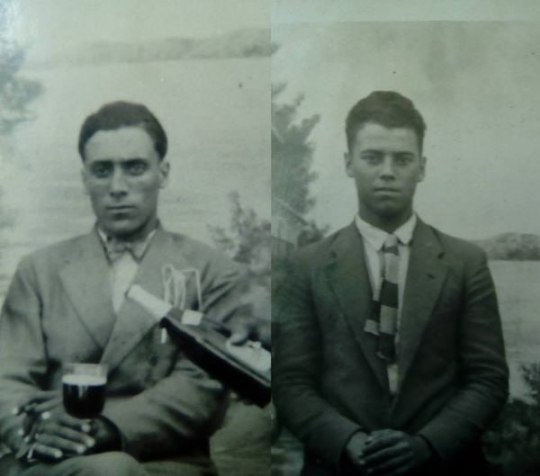
https://www.facebook.com/groups/1450962798532022/?multi_permalinks=2698090980485858&hoisted_section_header_type=recently_seen&__cft__[0]=AZWal5nhBEGRBH5NKfirkYsptV1fqReG3llZCcaKJK8z1Ipn58Vx1CJA0LPxHf_DyAdDX4AbuNGZQ2ONH5OJSPU7m_sq_tTUEMUFy26gCaZDjW53LdSa2SYvk_RMFIXaeRD_GadQBN56gW4sm71s3w9PaTuUHEQZJJRx7197-zei12LE37JBsGmtAHGGBOF4-UZ08p_dsavS6p-YgysXaSNeQ2dRk0FNZ8XDKVbkqjMVMg&__tn__=%2CO%2CP-y-R
#mencey#icoden#taoro#bencomo#guanches#aborigenous#indigenous#culture#history#genocide#native#unesco#united nations#international criminal court#cou penal international#corte penal internacional#aborigenes#indigenas#cultura#historia#genocidio#nativos#naciones unidas#canarias tiene identidad cultural propia#canarias la colonia mas antigua del mundo#descolonizacion de canarias#canarias#islas canarias#onu#canarios
3 notes
·
View notes
Text
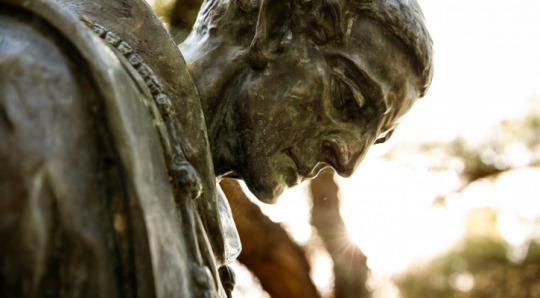
Saint Junipero
In 1776, when the American Revolution was beginning in the east, another part of the future United States was being born in California. That year a gray-robed Franciscan founded Mission San Juan Capistrano, now famous for its annually returning swallows. San Juan was the seventh of nine missions established under the direction of this indomitable Spaniard.
Born on Spain’s island of Mallorca, Serra entered the Franciscan Order taking the name of Saint Francis’ childlike companion, Brother Juniper. Until he was 35, he spent most of his time in the classroom—first as a student of theology and then as a professor. He also became famous for his preaching. Suddenly he gave it all up and followed the yearning that had begun years before when he heard about the missionary work of Saint Francis Solano in South America. Junipero’s desire was to convert native peoples in the New World.
Arriving by ship at Vera Cruz, Mexico, he and a companion walked the 250 miles to Mexico City. On the way Junipero’s left leg became infected by an insect bite and would remain a cross—sometimes life-threatening—for the rest of his life. For 18 years, he worked in central Mexico and in the Baja Peninsula. He became president of the missions there.
Enter politics: the threat of a Russian invasion south from Alaska. Charles III of Spain ordered an expedition to beat Russia to the territory. So the last two conquistadors—one military, one spiritual—began their quest. José de Galvez persuaded Junipero to set out with him for present-day Monterey, California. The first mission founded after the 900-mile journey north was San Diego in 1769. That year a shortage of food almost canceled the expedition. Vowing to stay with the local people, Junipero and another friar began a novena in preparation for St. Joseph’s day, March 19, the scheduled day of departure. On that day, the relief ship arrived.
Other missions followed: Monterey/Carmel (1770); San Antonio and San Gabriel (1771); San Luís Obispo (1772); San Francisco and San Juan Capistrano (1776); Santa Clara (1777); San Buenaventura (1782). Twelve more were founded after Serra’s death.
Junipero made the long trip to Mexico City to settle great differences with the military commander. He arrived at the point of death. The outcome was substantially what Junipero sought: the famous “Regulation” protecting the Indians and the missions. It was the basis for the first significant legislation in California, a “Bill of Rights” for Native Americans.
Because the Native Americans were living a nonhuman life from the Spanish point of view, the friars were made their legal guardians. The Native Americans were kept at the mission after baptism lest they be corrupted in their former haunts—a move that has brought cries of “injustice” from some moderns.
Junipero’s missionary life was a long battle with cold and hunger, with unsympathetic military commanders and even with danger of death from non-Christian native peoples. Through it all his unquenchable zeal was fed by prayer each night, often from midnight till dawn. He baptized over 6,000 people and confirmed 5,000. His travels would have circled the globe. He brought the Native Americans not only the gift of faith but also a decent standard of living. He won their love, as witnessed especially by their grief at his death. He is buried at Mission San Carlo Borromeo, Carmel, and was beatified in 1988. Pope Francis canonized him in Washington, D.C., on September 23, 2015.
11 notes
·
View notes
Text
Dia 3: Novedades Marvel en Comic Con

MARVEL STUDIOS
El estudio tuvo muchísimos paneles ayer con muchas novedades, tráilers y cómo seguiran las próximas fases de Marvel.
Kevin Feige contó que She-Hulk y Black Panther será lo último de la fase 4
SHE-HULK
Hay nuevo tráiler pero también hay varias sorpresas que aparecen en él. No sólo Mark Ruffalo aparecerá en escena sino también Wong y Daredevil!!!

BLACK PANTHER: WAKANDA FOREVER
Fue muy emotivo este panel y luego de la proyección del tráiler, los miembros del cast se emocionaron mucho y rindieron homenaje a Chadwick Boseman.
Confirmaron el papel de Namor a manos del actor mexicano Tenoch Huerta, así como la presentación de Dominique Thorne como Riri Williams/IronHeart, quien formará parte clave del MCU en la quinta fase de la misma. Michaela Coen interpretará a Aneka quien en los cómics es conocida por ser la entrenadora de las legendarias Dora Milaje.
Llega a los cines en noviembre de este año
youtube
FASE 5 Y 6
ANT-MAN AND THE WASP: QUANTUMANIA
Evangeline Lilly y Paul Rudd vuelven a sus protagonicos pero tambien se suman Bill Murray en un papel desconocido y Jonathan Majors regresar con su papel de Kang, el Conquistador, aunque no será la misma versión que vimos en la serie de Loki. Sin embargo, sí se presentó al legendario Modok dentro de los personajes que conoceremos en esta historia.
Hay primer póster

GUARDIANS OF THE GALAXY VOLUMEN 3
El elenco completo estuvo presente en San Diego junto con James Gunn y contaron que esta vez se podrá ver un poco mas de la historia de origen de Rocket.
Tambien estuvo presente Will Poulter, quien se incorpora a esta nueva entrega. Hubo un pequeño avance para los presentes en vivo!! La película llega el 5 de Mayo de 2023.
DAREDEVIL BORN AGAIN

La intensidad que me va a generar esto!! Vuelve Charlie Cox en el papel de Daredevil y el Wilson Fisk de Vincent D'onofrio para una nueva serie que llegará en primavera del 2024
SE VIENEN PELÍCULAS DE LOS VENGADORES
La fase 5 y 6 del universo Marvel llevará por título “The Multiverse Saga
Y habrá dos películas una es Avengers: The Kang Dinasty, lo que nos indica que el personaje de Jonathan Majors será crucial en esta nueva era para Marvel. La otra llevará por título Avengers: Secret Wars.
Lo particular es que ambas llegarán en el 2025, pero la batalla con Kang la veremos el 2 de mayo, mientras que el proyecto de Secret Wars llegará el 7 de noviembre.


Por acá la lista completa de todo lo que se viene

Y cierro este especial de Marvel con algunas de las fotitos de los paneles: Guardians of the galaxy, Ant-Man.


2 notes
·
View notes